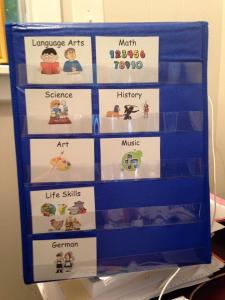Before I became an accidental homeschooler, I was an on-purpose middle school and high school teacher. I loved it and I hated it, but mostly, I loved it. It was hard, it was fun and sometimes I cried and I (thought) bad words. But, I was actually pretty good at it and I’d like to share three things that worked then that I find are still working now.
1. When I first began teaching, my amazing mentor told me, “You bring the fun – or they will. And you’ll never like the fun they come up with.” If content is uninteresting, delivery is boring and activities are humdrum ho-hum, you can guarantee that your classroom will swiftly devolve into a zoo. When working with beginning teachers who were struggling to manage their classrooms, this was one of the FIRST things I considered. And it is still true in my homeschool, enrollment two. If I don’t tie the content to my children’s interest, or I dish up the same-old same-old every day, or I fail to frequently incorporate the kinds of activities they enjoy, we are going to have a terrible, horrible, no good, very bad school day.
Which brings me to…
2. Learning styles matter. Learning styles refer to the preferred way a person learns. Think about yourself and how you like to learn new things. Do you like to read a book? Would you prefer to watch a movie or video or listen to a recording presenting the material or skill? Or, would you learn best if you actually got up and did the thing alongside a master teacher? Most people have one dominant learning style, with a secondary style as well. Most adults can manage to learn in a number of different ways because we have been conditioned to do so – and it makes it rather convenient since many of us have to listen to presentations, read books or trade journals or watch videos for our jobs. However, forcing children to “learn” in a way that is not their preferred style much of the time is torturous both for the teacher and the child. Teaching in their preferred style helps make sure that at least some of the planned activities are those they enjoy.
But what about the necessary activities they don’t enjoy? (And I realize there is an entire school of thought that says children should only do activities they enjoy. But, I’m just not running that kind of joint.)
For those times when an activity is not interesting or fun, I suggest…
3. “Probably so, but nevertheless…” This was a phrase I learned at a conference my first year teaching and it has served me well. For example, Scooter loathes math fact flashcards. I have chosen this practice method for two reasons. First of all, not everything can be cute and fun – I simply am not going to make up a puppet show or game for everything we do. (I may never make up a puppet show in fact.) Secondly, in the case of math facts, a recent study suggests that cutesy little games and activities aren’t nearly as good as old-fashioned “drill and kill.” In fact, worksheets and flashcards may be the absolute best way to teach math facts. Do we do some games? Sure. Do we do some hands-on activities? Absolutely. But sometimes, we do flashcards. And Scooter hates them. More than he hates broccoli, which is saying something.
But this is where, “Probably so, but nevertheless” really comes in handy.,
Observe.
Scooter: I HATE flashcards!
Me: Probably so, but nevertheless, we are going to do them.
Scooter: They are BORING and STUPID!
Me: Probably so, but nevertheless, it is time for flashcards.
Scooter: I can’t wait for them to be OVER!!!
Me: Probably so, but nevertheless, here we go!
Notice the following things about this handy phrase. “Probably so….” acknowledges the child’s feelings. “Probably so….” allows the child to save face because no disagreement is stated. “Probably so” presents no counter-argument. (Why not? Because in the throes of battle, it is not fruitful for me to argue the benefits of flashcards. Scooter does not give two fat farts about how flash cards affect his brain synapses, or about how they are the building blocks for math and science (his favorite subjects) or about the virtues of obedience or how hard I worked to make them. He just HATES them and he is mad!)
“Probably so” acknowledges all of that, skips the argument and moves right on to, “Nevertheless….” which is firm and assertive – and I keep repeating it until Scooter figures out it’s do the damn cards or hear, “Probably so, but nevertheless” on repeat ad infinitum.
Try this phrase. Really. Everyone who has tried it has grown to love it as much as I do. (My cohort wanted to get tee shirts made, but we never did. Nevertheless, it’s a great phrase.) Then, let me know how it went.
So, in summary, bring the fun, teach to your child’s learning style and remember, “Probably so, but nevertheless…” covers a multitude of wrongs.
And finally, I want to say that public school – and especially public school teachers – have many strengths. I know there are bad apples and bad schools, but most I have ever encountered are well-educated, highly skilled professionals committed to learning more, doing better and giving all they have to their students. This post was inspired by yet another thing I read today slamming public schools and public school teachers – and it made me mad and it hurt my heart. We homeschool because it’s best for our family – but not because public schools or public school teachers are bad. I owe much of my success at home (and in school) to public schools and public school teachers. I am a better human being for the experiences and relationships I had there. So, godspeed, public educators – and thank you.




